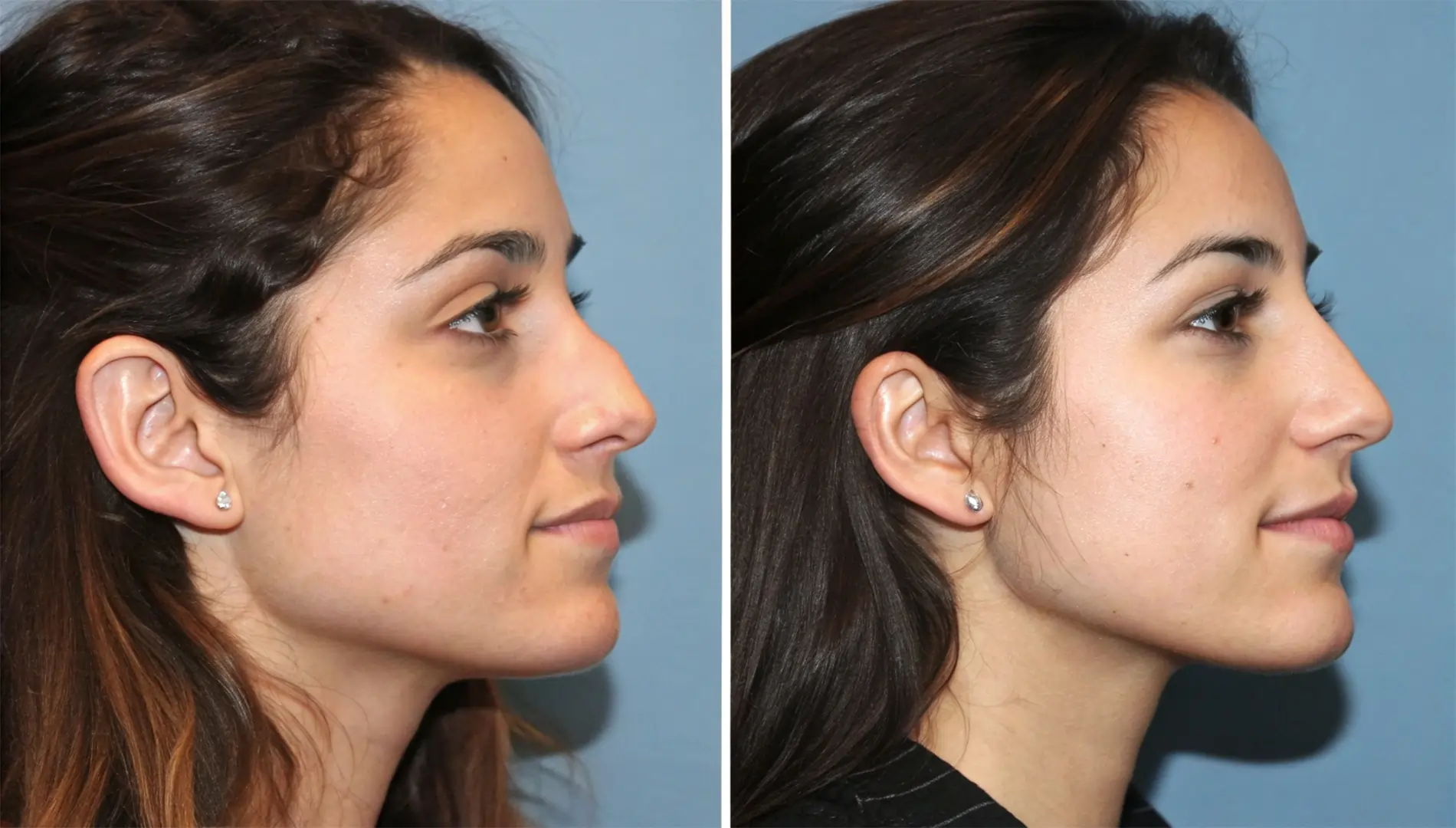A facelift is a type of cosmetic surgery that comes in many forms. It removes sagging skin from the face and neck and is often performed alongside procedures like brow lifts to rejuvenate the skin. But, like most cosmetic surgeries, it has pros and cons that you should consider carefully before proceeding.
- Why do people get facelifts?
- Who needs a facelift?
- How common are facelifts?
- How much does a facelift cost in the US?
- What is the facelift surgery process like?
- What are the different kinds of facelifts?
- Benefits Facelift Surgery
- Risks of Facelift Surgery
- Recovery
- Self-care
- What should you do if you have a problem during your recovery?
- Does insurance cover facelift surgery?
- Realistic Expectations for Facelift Surgery:
- If you don’t want surgery, you can consider the following alternatives. These include:
- Conclusion
Why do people get facelifts?
No one decides to have a facelift surgery all at once. There are a number of reasons why people decide to do so.
Anti-aging: Many people want to look as vibrant on the outside as they feel on the inside.
Boost self-confidence: Feeling good about your appearance can have a ripple effect on your overall mood and self-esteem.
Significant sagging: When non-surgical creams and treatments fail to eliminate wrinkles and sagging skin on the face and neck, a facelift can have more dramatic results.
Who needs a facelift?
The ideal candidates for facelift surgery are individuals showing signs of facial aging while maintaining some degree of skin elasticity. Typically, this includes people between the ages of 40 and 60, though those outside this age range may also qualify for the procedure in certain cases.
How common are facelifts?
According to the American Society of Plastic Surgeons (ASPS), facelifts consistently rank among the top cosmetic surgeries performed each year. In 2020, despite the pandemic, over 234,000 facelift (Rhytidectomy) procedures were performed in the U.S., making it one of the most sought-after surgeries for addressing signs of aging.
How much does a facelift cost in the US?
Facelift surgery isn’t cheap, but many people make the investment. In the US, the average cost for this procedure ranges from $7,500 to $15,000, depending on the surgeon’s experience, the complexity of the procedure, and where you’re having it done. Remember, this usually doesn’t include additional costs like anesthesia or facility fees.
What is the facelift surgery process like?
1. Consultation
This is your opportunity to meet with a board-certified plastic surgeon. They will evaluate your face, discuss your goals, and recommend the best approach. Don’t be shy – ask questions! So that you don’t have any doubts.
2. Preparation
Once you’ve decided to have a facelift, you need to prepare. Your surgeon may ask you to:
Quit smoking, as it slows down the healing process.
Avoid taking certain medications, such as blood thinners.
Arrange for someone to drive you home after surgery.
3. Day of Surgery
You will be under anesthesia on this day and will not feel anything. The procedure can take anywhere from 2 to 6 hours, depending on the complexity of the procedure.
4. Recovery
You will likely experience some swelling, bruising, and stiffness after surgery, but this should go away within a few weeks. Follow your surgeon’s aftercare instructions carefully and don’t skip follow-up appointments.
What are the different kinds of facelifts?
Facelift surgeries come in various types, tailored to address specific areas of the face and neck. Types of facelift surgeries include:
Traditional facelift: This surgery involves incisions around the ears, hairline, and beneath the chin. The surgeon separates the skin from underlying tissues, tightening the muscles and supporting structures of the face and neck. Excess fat in the neck and jowls may be removed. The skin is then repositioned naturally, and any excess skin is trimmed away. This procedure is typically recommended for those seeking significant improvement in moderate to advanced facial aging.
SMAS facelift (SMAS rhytidectomy): Targeting the lower two-thirds of the face, a SMAS facelift focuses on tightening the superficial musculoaponeurotic system (SMAS), the muscular layer of the face, along with trimming excess skin and fat in the cheeks and lower face. This technique is a variation of the traditional facelift.
Deep plane facelift: In this procedure, the surgeon lifts the SMAS, fat, and skin as one unit, addressing multiple areas of the face simultaneously. It is a more comprehensive approach to facial rejuvenation.
Mid-facelift: This surgery targets the cheek area by repositioning the fat and tightening the skin, aiming to restore volume and a youthful appearance to the mid-face.
Mini-facelift: A mini-facelift focuses on lifting the lower face and neck. It is less invasive and quicker than a traditional facelift, typically recommended for individuals with early signs of facial sagging.
Cutaneous (skin) facelift: This procedure addresses only the skin, usually targeting the neck and lower face, without altering underlying structures.
In many cases, people who get a facelift undergo other procedures at the same time as their facelift surgery, including:
- Brow lift
- Chemical peel
- Facial implants
- Jawline rejuvenation
- Laser skin resurfacing
- Rhinoplasty (nose job)
- Blepharoplasty (eyelid lift)
- Liquid facelift with injectable dermal fillers
Benefits Facelift Surgery

People who have facelift surgery generally experience increased self-confidence and self-esteem due to the removal of wrinkles from the face and neck.
Risks of Facelift Surgery
What are the possible complications of facelift surgery?
Like any surgery, there are side effects, and you are at risk for certain complications. Risks of facelift surgery, although rare, include:
- Anesthesia problems
- Infection
- Scars
- Skin color irregularities
- Long-term swelling or bruising
- Changes in skin sensation or numbness
- Nerve damage (although rare)
- Hematoma (a collection of blood in the surgical area)
- Temporary or permanent hair loss at the incision sites
Choosing a skilled, board-certified surgeon is the best option to minimize these risks.
Recovery
- You will not be able to drive for a few days after surgery, as recommended by your surgeon.
- For the first few days, it is important to keep your head elevated to help reduce swelling.
- Full recovery usually takes 2 to 4 weeks, so it is recommended to take some time off work during this period.
- Bruising will be visible for at least 2 weeks.
- Avoid showering or getting your bandages wet for the first 2 days. Avoid strenuous activity, saunas, and massages for at least 2 weeks.
- Stitches are usually removed within 7 to 14 days, unless you have dissolvable stitches.
- After a few weeks, bruising, scarring, and skin discoloration should have significantly improved.
- You can expect to see the final results of your facelift in 6 to 9 months.
Self-care
Self-care at home during the three weeks after surgery will help your recovery and reduce your risk of complications:
- Follow wound care instructions as directed by your surgeon.
- Wear clothing that fastens in the front and avoid items that need to be pulled over your head.
- Do not pick at the scabs that develop on your wound.
- Avoid applying excessive pressure or movement near the incision sites.
- Refrain from using makeup.
- Adhere to the guidelines on when to begin using shampoo and soap, and ensure you use the recommended types.
- Avoid strenuous or aerobic activities and exercise.
- For the first three weeks, avoid direct sun exposure on the incision areas. After that, use sunscreen with an SPF of 30 or higher.
- Avoid coloring, bleaching, or perming your hair for at least six weeks.
What should you do if you have a problem during your recovery?
In some cases, cosmetic surgery may not give the desired results and the outcome may be different from what you expected.
If you are unhappy with the results of your facelift or think it was not done correctly, you should discuss the matter with your surgeon through the hospital or clinic where you had the treatment.
If you have severe pain or other unexpected symptoms, the first thing you should do is contact the clinic where you had the procedure. You can also call NHS 111 or get help from NHS 111 online.
Does insurance cover facelift surgery?
Insurance companies typically do not cover cosmetic or elective surgeries, meaning you will have to pay for facelift surgery out of pocket. Make sure you get all costs from your surgeon, including anesthesia costs, aftercare, prescriptions, and other related expenses.
Realistic Expectations for Facelift Surgery:
A facelift can make a significant difference. While it can give you a younger, refreshed appearance, it is not a magic bullet. The best results come from having realistic expectations and a clear understanding of what the procedure can achieve.
If you don’t want surgery, you can consider the following alternatives. These include:
Ultherapy: Uses ultrasound to tighten the skin.
Botox and fillers: To smooth wrinkles and add volume.
Thread lift: A minimally invasive option for lifting sagging areas.
Conclusion
A facelift can be an effective solution for those looking to rejuvenate their appearance and address signs of aging, offering significant improvements in facial and neck contour. While it can provide a youthful, refreshed look, it’s essential to have realistic expectations and understand the potential risks and recovery process. Choosing a skilled, board-certified surgeon is crucial to minimizing complications and ensuring the best results. For those who prefer non-surgical alternatives, options like Botox, fillers, and Ultherapy can also provide visible improvements with less downtime. Ultimately, whether opting for surgery or non-invasive treatments, the goal is to feel confident and comfortable in your own skin.














